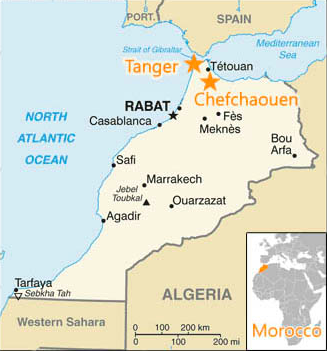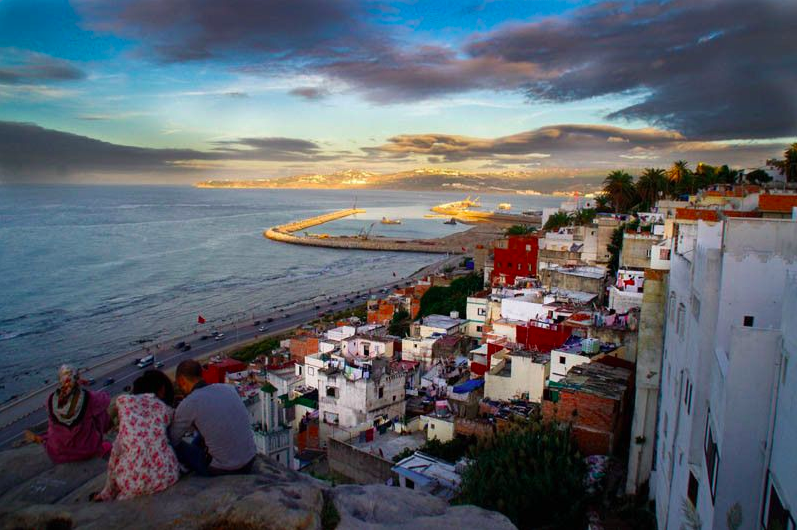Morocco is a country in North West Africa, bordered by Algeria to the east, Mauritania to the south, the Atlantic Ocean to the west and the Mediterranean Sea to the north.
Population estimate (2019): 36,429,027
Capital City: Rabat
Currency used: Morocco Dirham
Gross National Income per capita (2013) (PPP international $): 7
Time zone: GMT + 1
Population growth rate (2018): 1.27%
Total fertility rate per woman: 2.11
Languages: Arabic and Berber are the official languages, French is typically the language of business.
Key ethnic groups: 66% Arabs, 33% Berbers, 1% “other”.
Religion: 99% Muslim, 1% other including Jewish, Christian and Baha’i.
Literacy: 67%
Climate: Morocco’s climate is generally subtropical, influenced by the Atlantic and Mediterranean. Winters are relatively mild and wet, while summers are hot and dry, with temperatures being more extreme in the interior. The rainy season lasts from October to April, and the amount of rainfall gradually decreases from the northern to southern part of the country where one can observe desert-like conditions. In the coastal areas the average daily temperatures range between 18 and 28ºc in the summer and between 8 and 17ºc in winter. In the interior temperatures often exceed 35ºc in the summer, while temperatures may drop below 0ºc in the winter.
Healthcare system
The health system in Morocco comprises a public sector, a private not-for-profit sector and a private for-profit sector. The public sector has around 2,626 Basic Health Care Centres, 97 general hospitals, 37 specialised hospitals, and 4 University Medical Centres. In total the public facilities have 27,350 beds and 38,000 healthcare professionals.
One of the biggest challenges of the health system is difficulties in access to care for the poorest and rural populations, with a clear disparity between access and demand for care for certain illnesses. The public system also faces challenges related to management, often making them unable to compete with the quality of many private facilities.
The private non-profit sub-sector is made up of the health resources of the National Fund of Social Security, the Moroccan Red Crescent, and other welfare bodies and NGOs. In total they provide around 1,874 beds.
The for-profit sub-sector is organised individually or grouped together by private physicians and other health professionals in the free market. This sector has around 220 clinics, 30 dialysis centres, 100 radiologists’ offices, as well as other specialisation and general practitioners’ offices. In total the sector provides approximately 6,156 beds and 10,800 healthcare professionals. Many private facilities are of high standards, often coming close to European/North American/Australian standards in terms of facilities, equipment and professional qualifications. While treatment at private hospitals is often too expensive for many locals, some hospitals collect funds for the poorer parts of the population, allowing them to get cheaper or free care.
Health statistics:
Life expectancy at birth (2016): 75/77 (male/female)
Probability of dying between 15 and 60 years: 74/65 (per 1000 population, 2016)
Total expenditure on health per capita (2014): $447
Number of doctors per 1000 population (2017): 0.68
Nursing and midwifery personnel density (per 1000 population, 2017): 0.84
Neonatal mortality rate (per 1000 live births, 2016): 17.8 [12.7-24.8]
Maternal mortality ratio (per 100.000 live births, 2016): 72.6
Births attended by skilled health personnel (2011): 73.6%
Top 10 causes of death:
Coronary heart disease: 34,438 people / 19.59 % of total
Stroke: 21,513 / 12.24%
Diabetes Mellitus: 20,285 / 11.54
Influenza and Pneumonia: 10,399 / 5.91%
Alzheimer’s/Dementia: 9,847 / 5.60%
Road traffic accidents: 6,385 / 3.63%
Kidney disease: 6,182 / 3.52%
Low birth weight: 4,591 / 2.61%
Liver disease: 4,147 / 2.36%
Lung cancers: 3,926 / 2.23%



